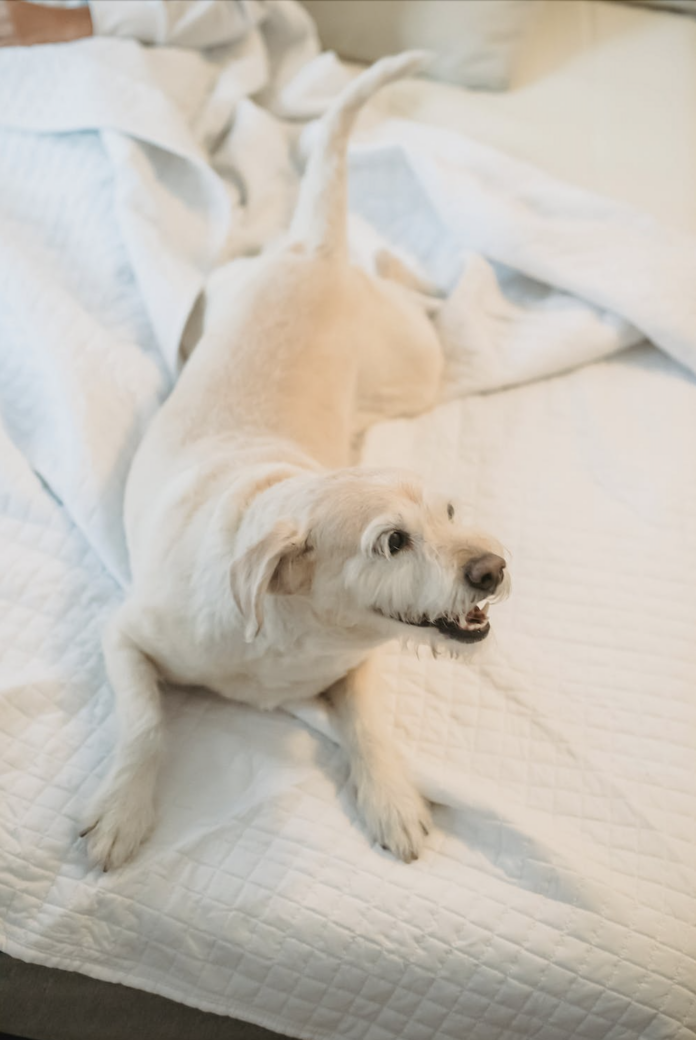How to Read Your Dog’s Body Language
While we humans communicate with each other mainly through text or speech, dog communication is a different matter entirely.
Dogs communicate mostly through their body language, so if you want to become a registered dog breeder working with animals, train your dog, or whether you just want to be a better pet parent, it is essential to be able to read this body language.
Dogs will use a combination of vocalisations, facial expressions, and physical postures to relay messages to both other dogs and humans.
The key to reading your dog’s body language is to look at the whole picture. That means considering not just their posture, but also their facial expressions and the way they’re moving. And it’s important to remember that context matters:
A dog who is wagging her tail and panting in the park is probably feeling happy and relaxed. But if she’s doing the same thing in the vet’s office, she might be feeling anxious or stressed.
The first step in reading your dog’s body language is to understand that different breeds of dogs will have different types of communication.
For example, herding dogs such as Border Collies and Australian Shepherds are bred to work with humans and therefore their body language is geared towards human interaction.
On the other hand, hunting dogs such as Labs and Beagles have been bred to work independently from humans and their body language reflects this independence.
Now, you can begin to look for specific cues in their body language.
The most important thing to remember is that dogs will use their entire body to communicate, not just their tail or their ears. Here are some common things to look for:
Tail
A dog’s tail is perhaps the most obvious way they communicate. A wagging tail usually means the dog is happy, while a tail between the legs indicates fear or submission.
However, it is important to note that some dog breeds (such as Greyhounds) naturally hold their tails down and should not be assumed to be scared based on this alone.
Here are some common tail cues to look for:
Happy, relaxed dogs will often have a loose, floppy tail that is wagging gently from side to side.
Anxious or stressed dogs may tuck their tails between their legs, which can make them appear shorter than normal. They may also hold their tails low or to one side.
Excited or aroused dogs may also hold their tails low, but they will often wag them vigorously from side to side.
A dog that is feeling aggressive or dominant may hold their tail high, often with a stiffer wag. They may also raise the hair on their tail (known as “hackles”), which can make them appear larger and more intimidating.
Ears
Like tails, a dog’s ears can give away their emotional state. Erect ears usually indicate interest or excitement, while flattened ears suggest fear or aggression.
Again, some breeds (such as Cocker Spaniels) naturally have floppy ears and should not be assumed to be relaxed based on this alone.
Here are some common ear cues to look for:
Relaxed, happy dogs will have soft, floppy ears that are pointing forwards or backwards.
Anxious or stressed dogs may have erect ears that are pointing backwards or sideways. They may also tuck their tails between their legs, which can cause their ears to lay flat against their heads.
Excited or aroused dogs may have erect ears that are pointing forwards.
Mouth
A dog’s mouth can also provide clues about how they are feeling.
A relaxed mouth with the tongue hanging out indicates a happy dog, while bared teeth or a closed mouth are signs of aggression or fear. Panting can also indicate stress or heat exhaustion in warm weather.
Here are some common mouth cues to look for:
Happy, relaxed dogs will often have a “soft mouth” – their lips will be loose and their tongue may be lolling out to the side.
Anxious or stressed dogs may have a “hard mouth” – their lips will be tight and pulled back, and their teeth may be showing. They may also lick their lips excessively.
Excited or aroused dogs may also have a “hard mouth”, but they may also be panting heavily.
Eyes
Eye contact is very important in canine communication.
Staring directly into another dog’s eyes is considered threatening behaviour, while averting one’s gaze is a sign of submission.
Dogs who maintain eye contact with you are usually trying to convey some sort of message, whether it be asking for a treat or showing excitement at seeing you.
Conversely, dogs who avoid eye contact may be feeling guilty about something or may be experiencing anxiety around people.
Here are some common eye cues to look for:
Happy, relaxed dogs will have soft, relaxed eyes with normal-sized pupils.
Excited or aroused dogs may have wide eyes with dilated pupils.
Anxious or fearful dogs may have hard, staring eyes with narrowed pupils. They may also show the “whale eye” – when the white part of the eye is visible all the way around the iris.
Body Posture
The position of a dog’s body can be very telling. A dog who is standing tall with an erect tail is usually feeling confident, while a dog who is crouching low to the ground with a tucked tail is likely feeling scared or threatened.
Likewise, a dog who is leaning into you is likely seeking attention or affection, while one who is leaning away may be feeling uncomfortable or intimidated.
Pay attention to the overall posture of your dog’s body to get a better idea of how they are feeling at any given moment.
Conclusion
We hope you enjoyed this article… What are your thoughts?
Please feel free to share with us in the comments section below.






